Daimler Truck subjects the eActros 600 to final winter tests
The “European Testing Tour Winter 2025,” covering more than 6,500 kilometres, took place in January and February. Two vehicles, each with a total train weight of 40 tons, followed roughly half of the northern part of the European Testing Tour 2024, which Daimler Truck completed last summer. Back then, the route took them to the Nordkapp, across the Baltic States, to the southernmost point in Europe in Tarifa, Spain, and then back to Germany.
The developers did not travel quite as far this time, as the focus was on winter testing – “in representative winter operation in Northern Europe on different routes and topographies as well as in different climate zones, gaining important insights into the effect of winter temperatures and road conditions on the energy consumption of the eActros 600.”
On their journey through ten countries in Northern Europe, the electric trucks – which, according to the license plates, were the same as the two vehicles used on the summer tour – were on the road in extreme temperatures of sometimes minus 18 to plus 9 degrees Celsius. The average daily speeds were between 64 and 77 kilometres per hour. Although the company does not provide exact consumption figures in the press release, it does state the changes compared to identical sections of the summer tour.
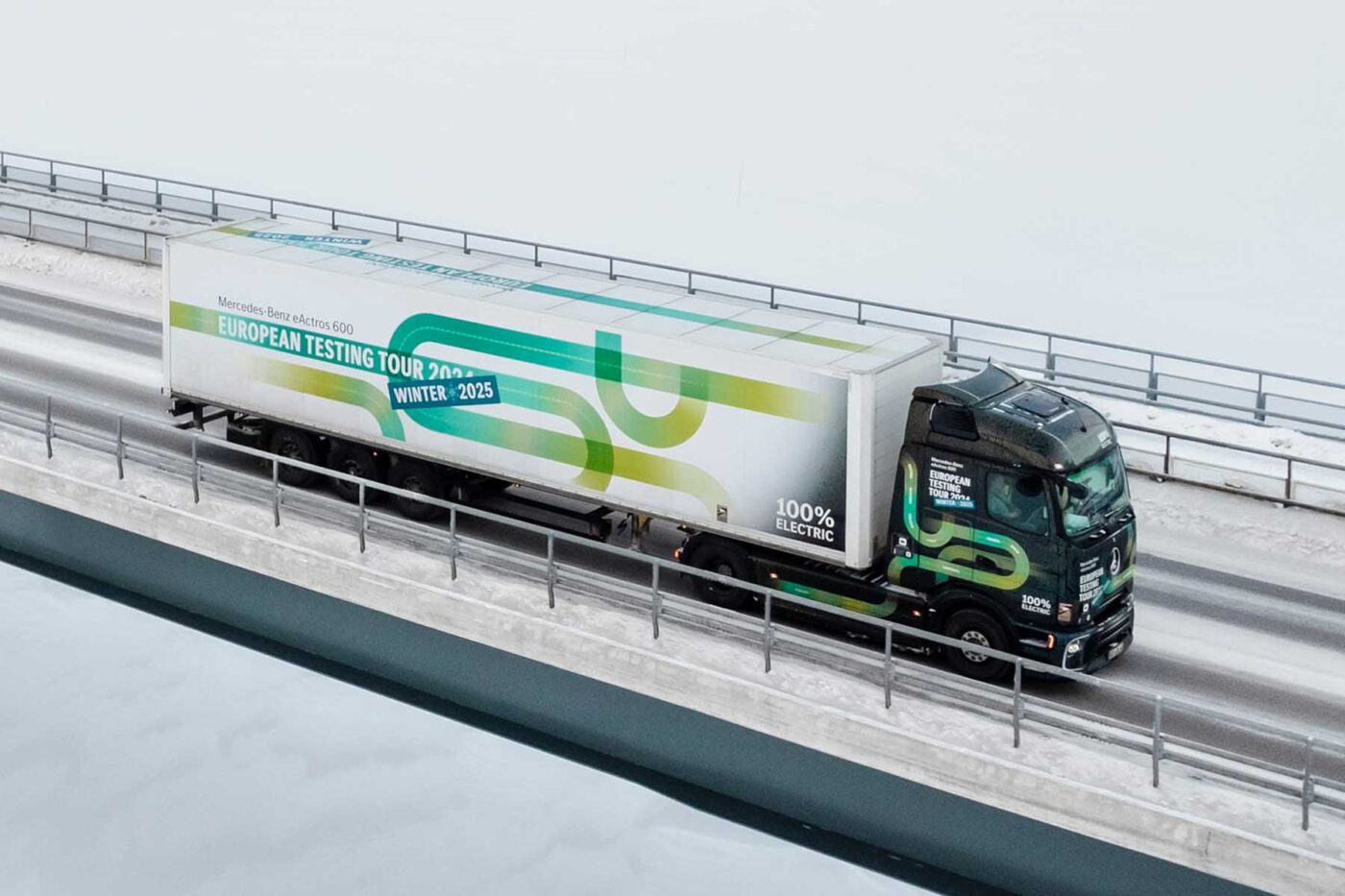
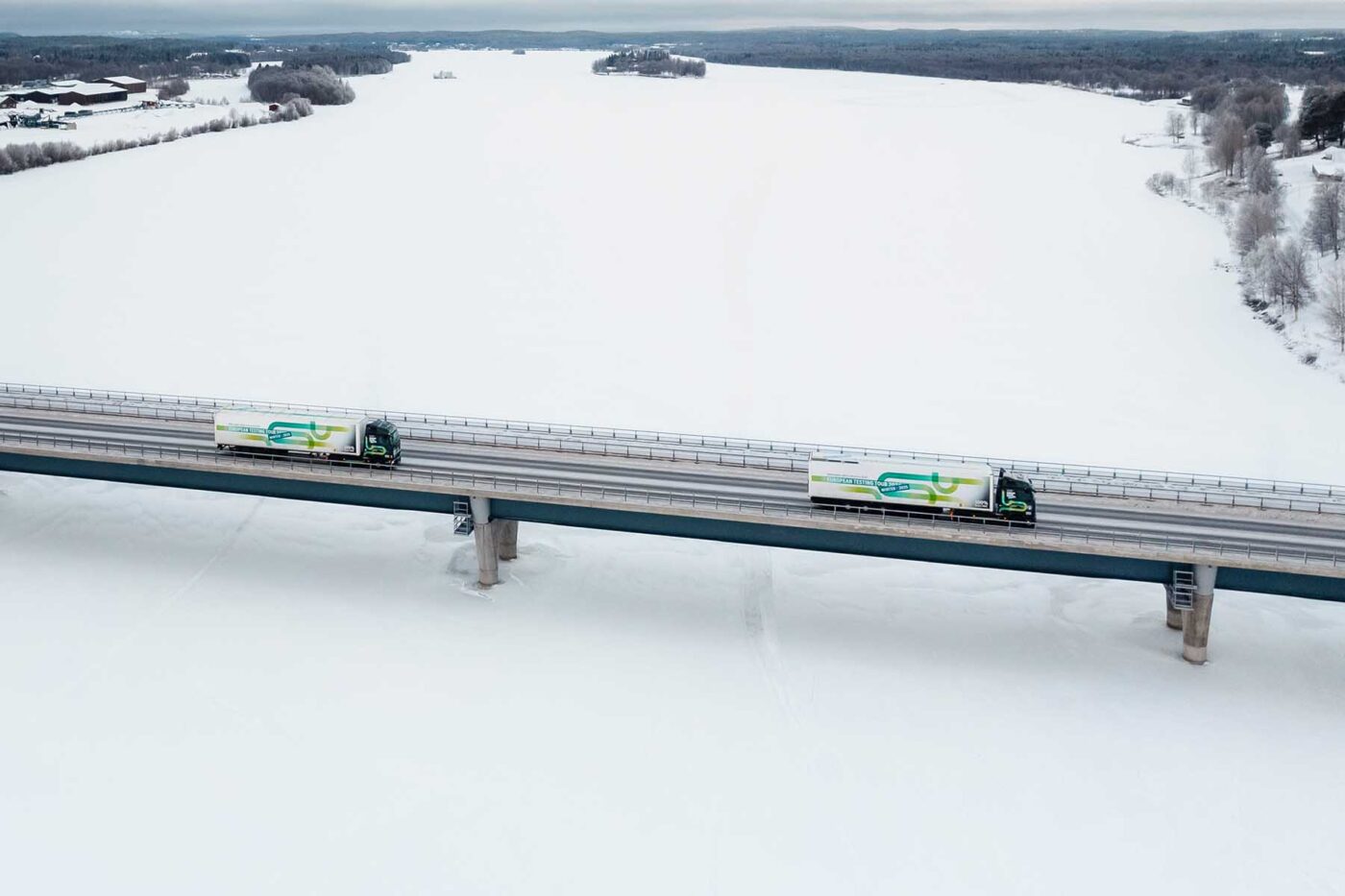
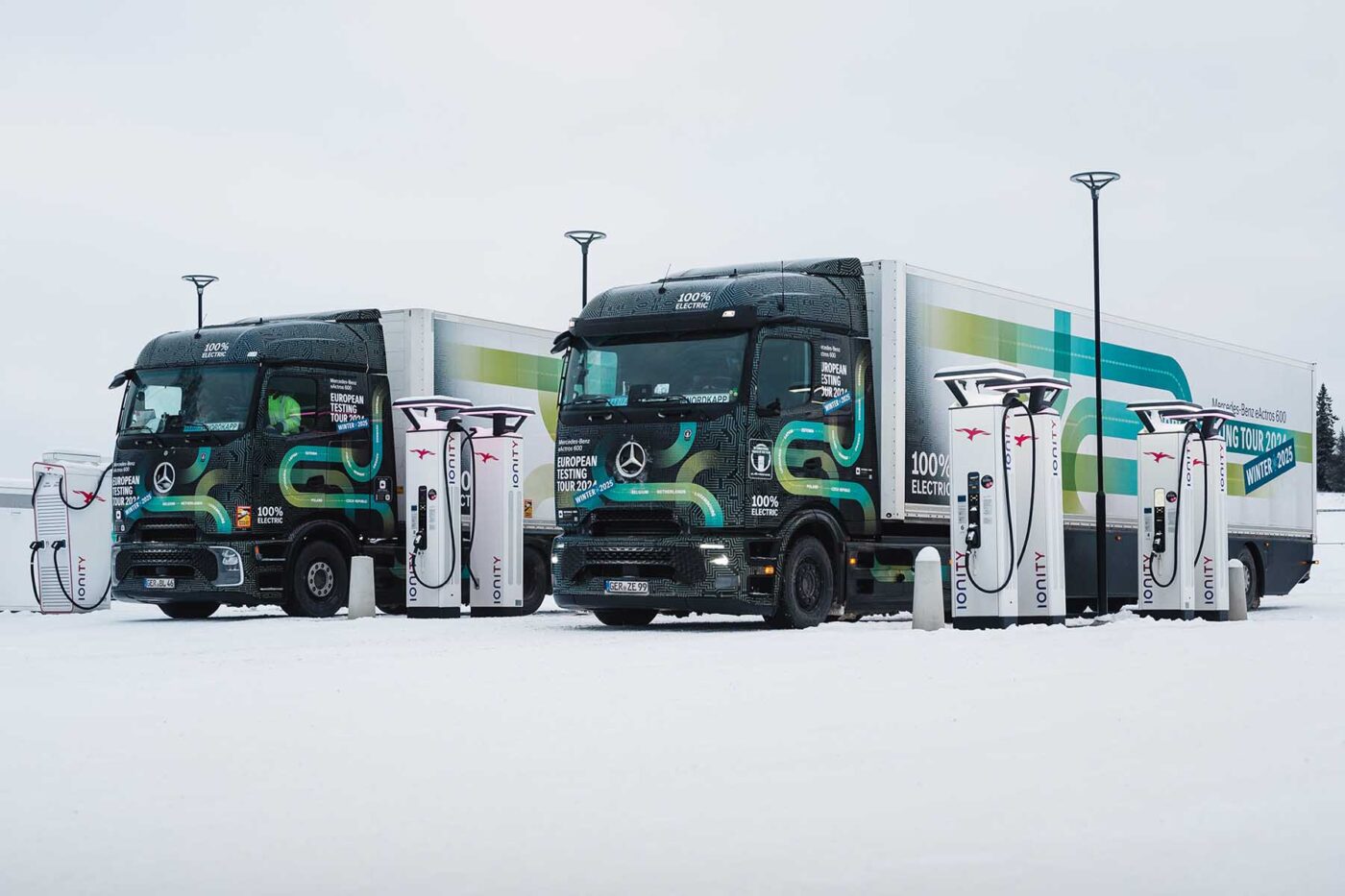
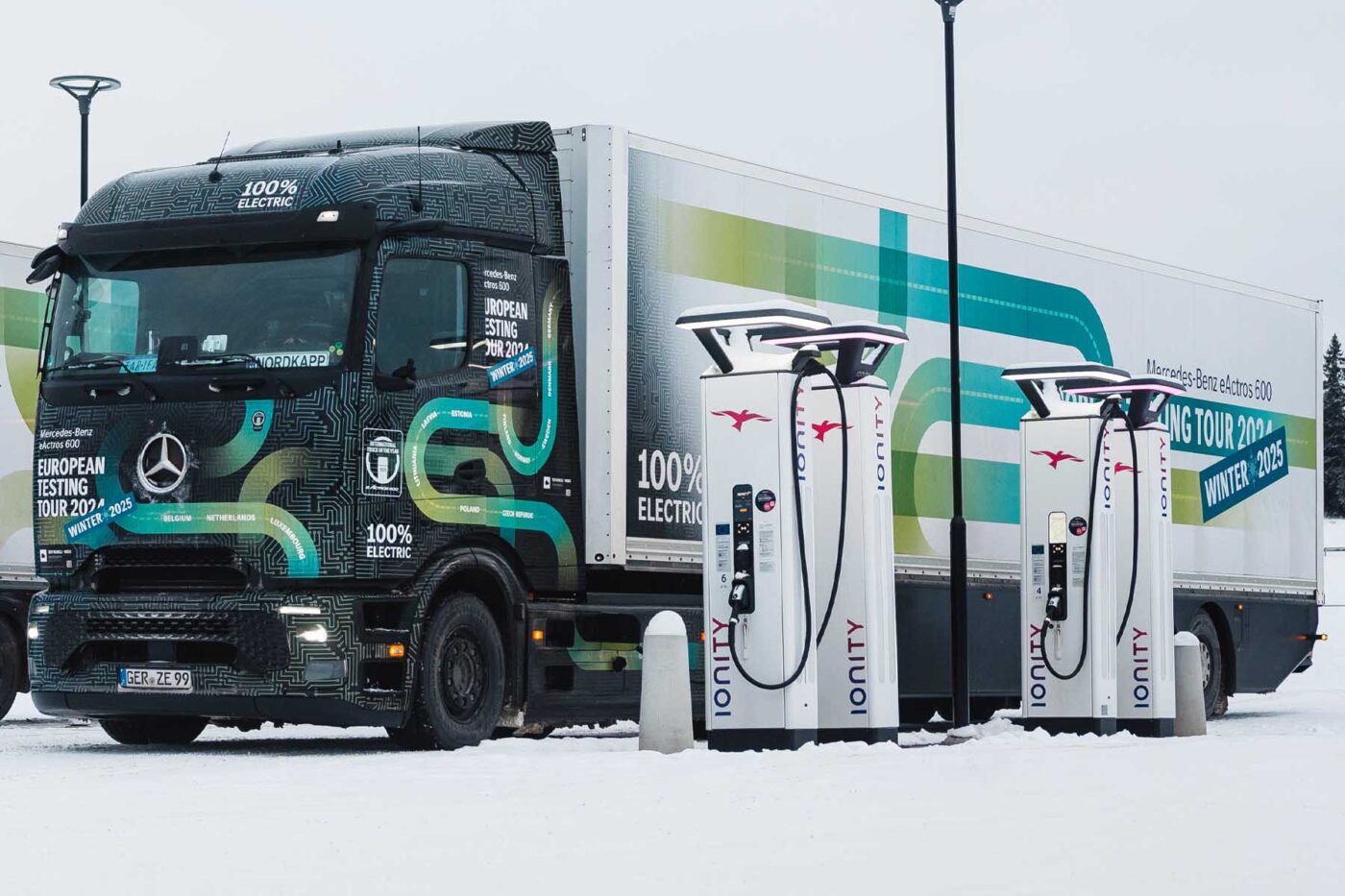
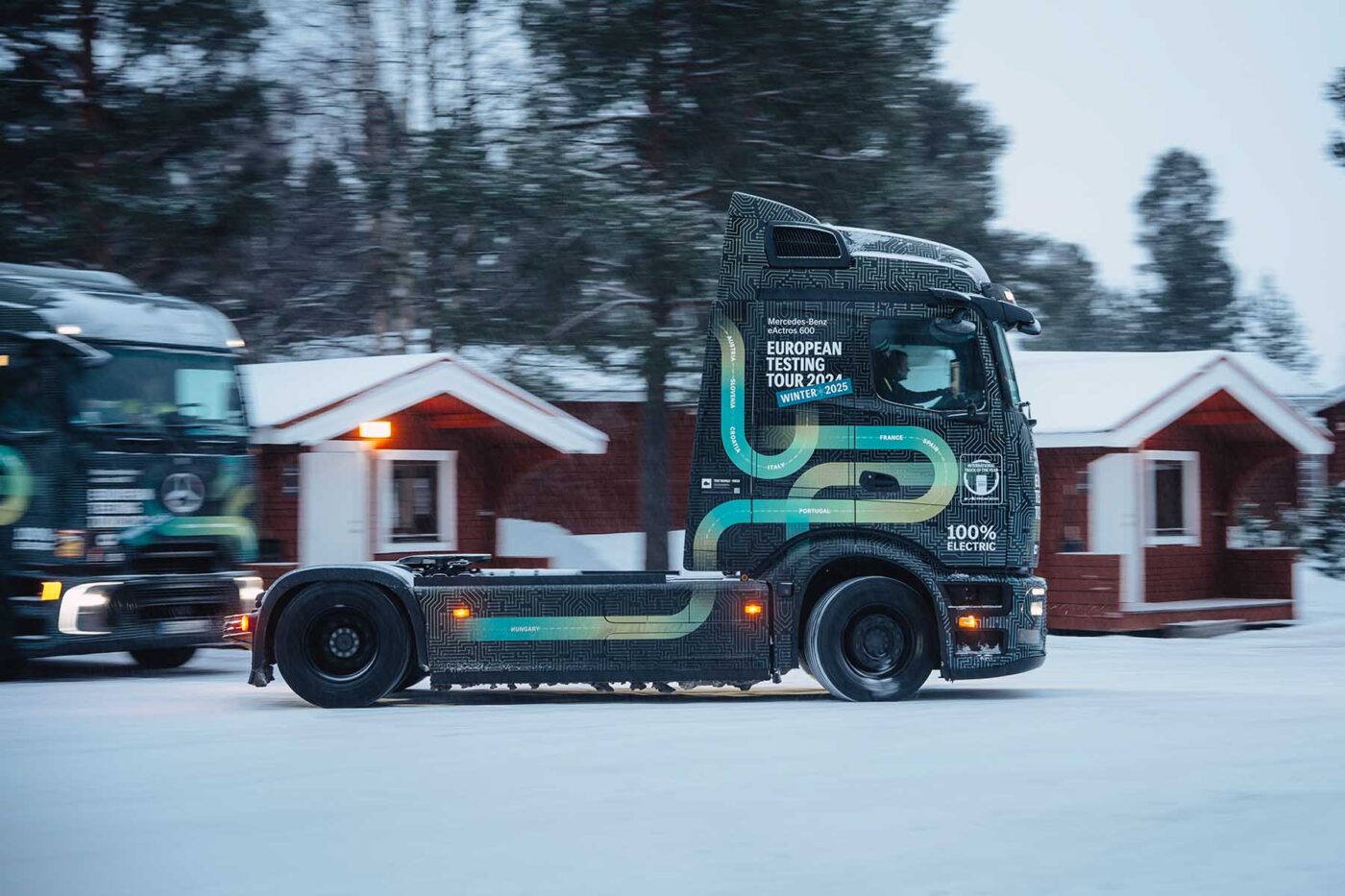
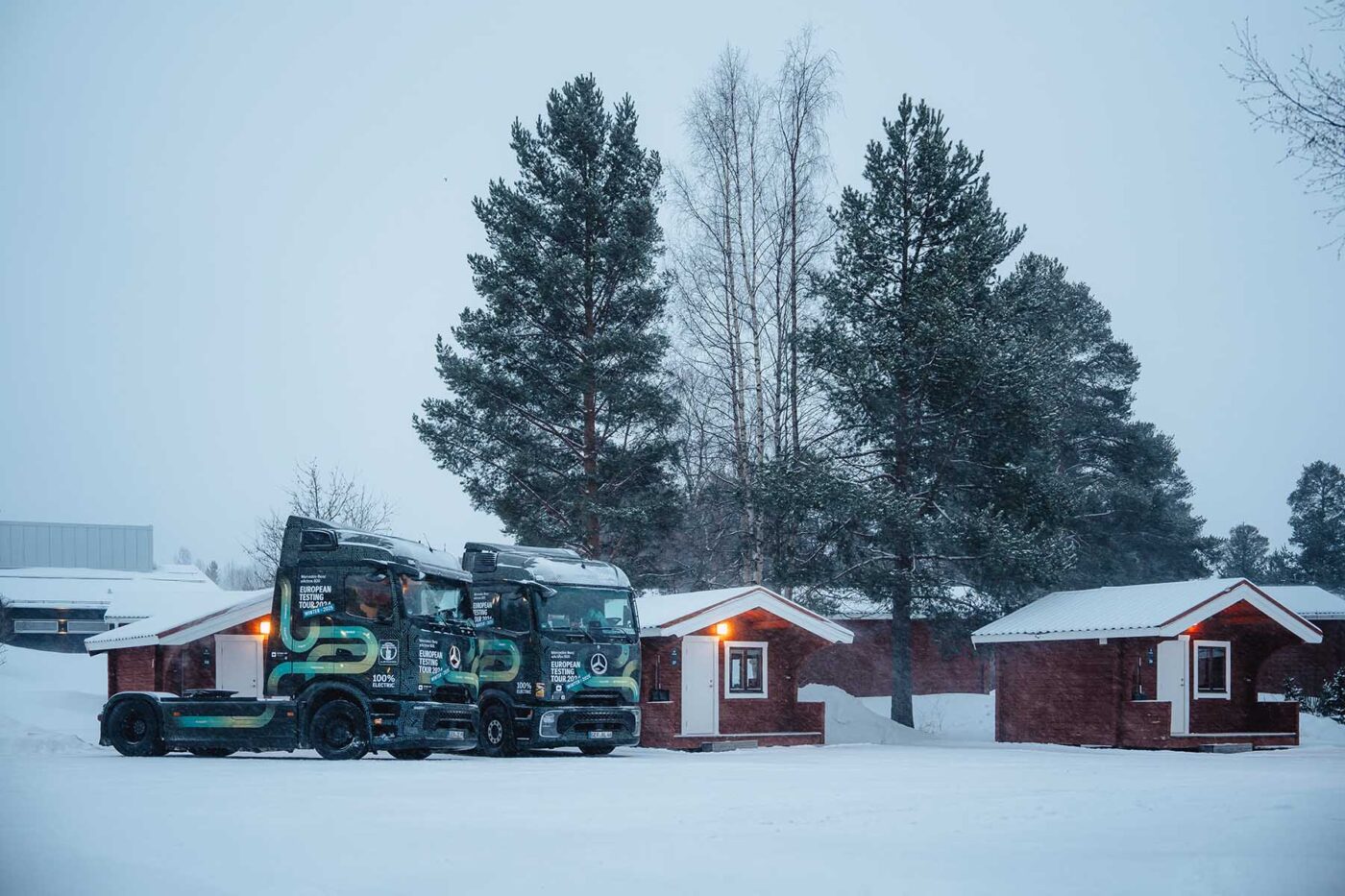
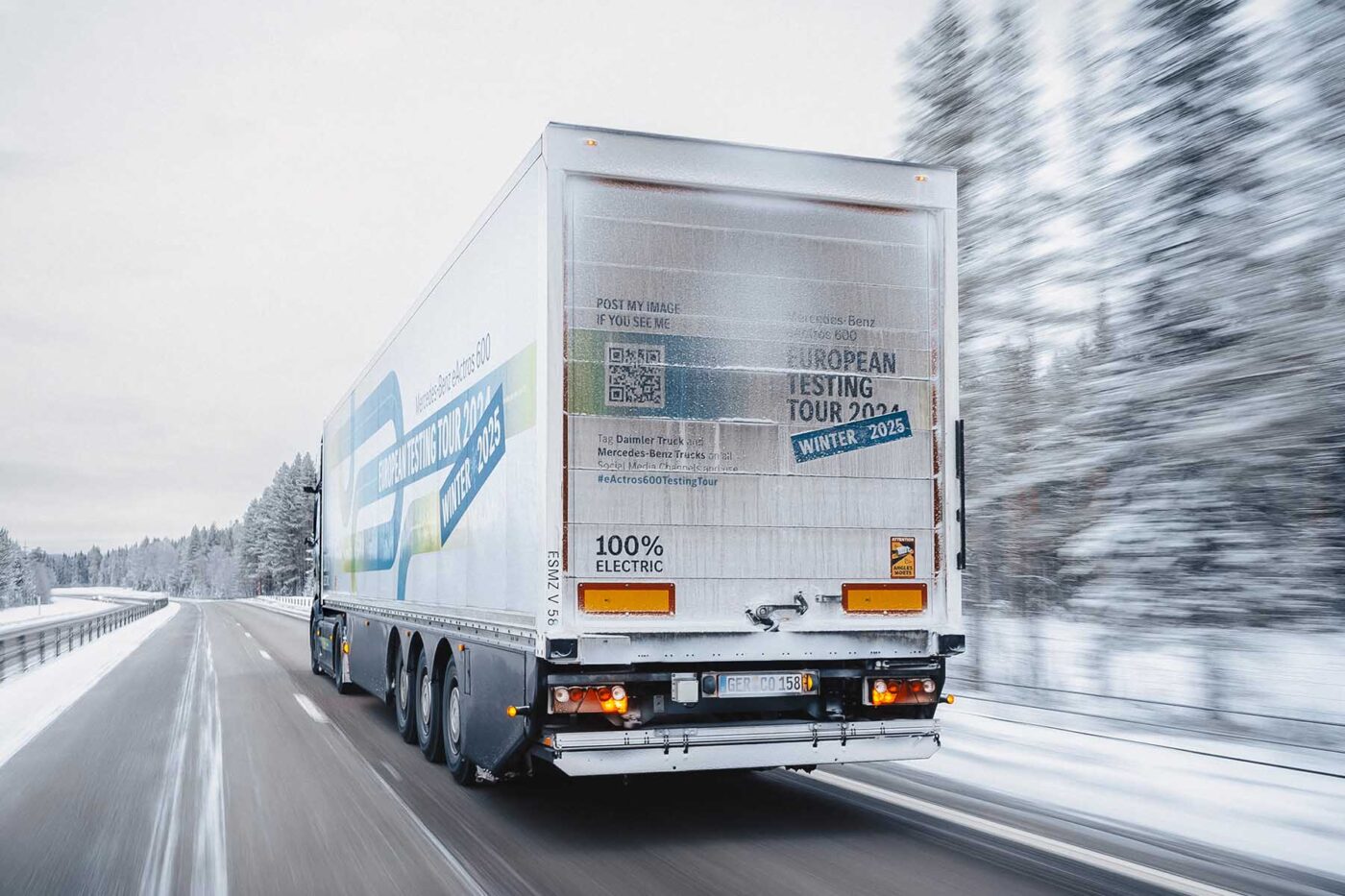
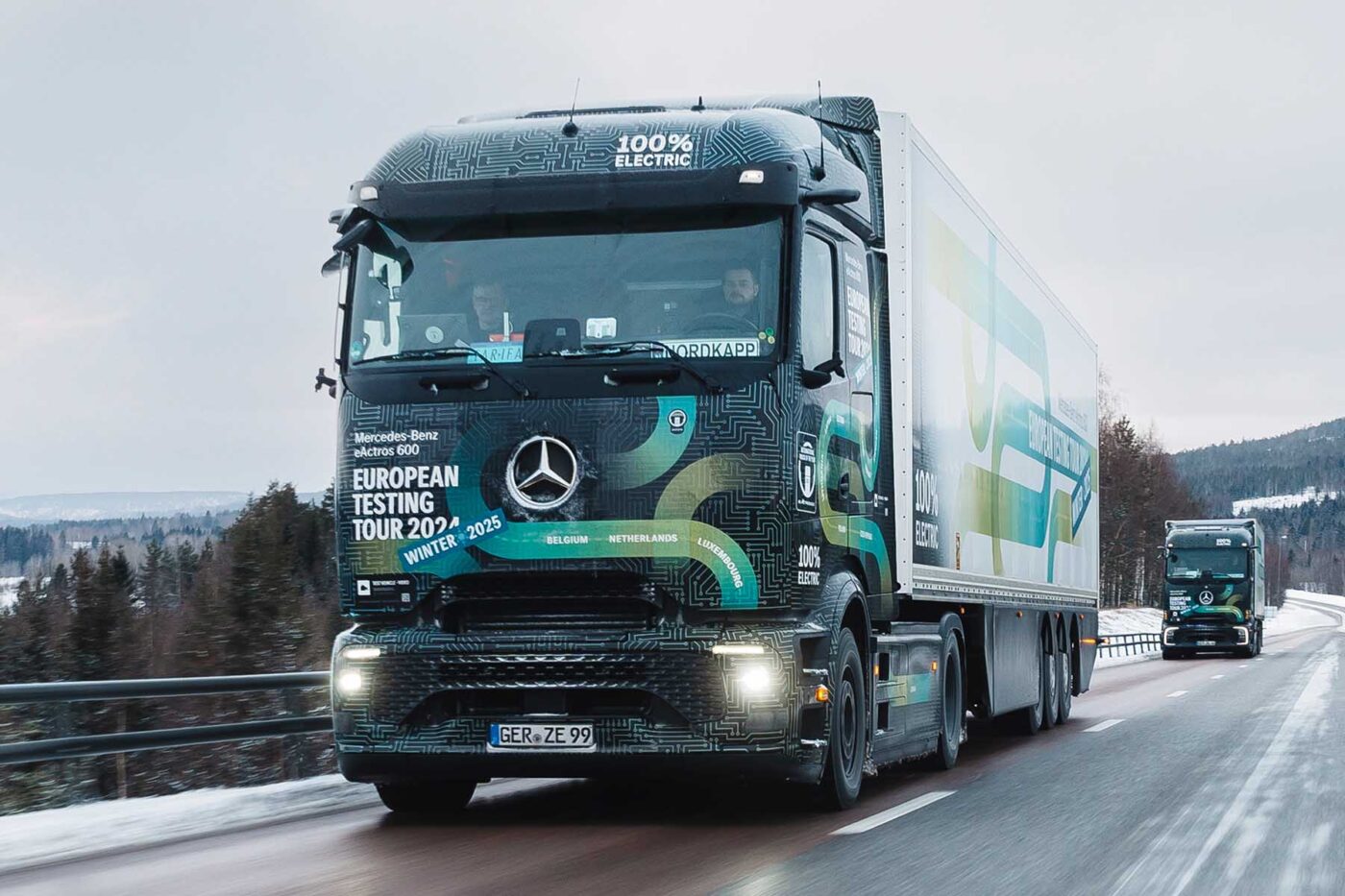
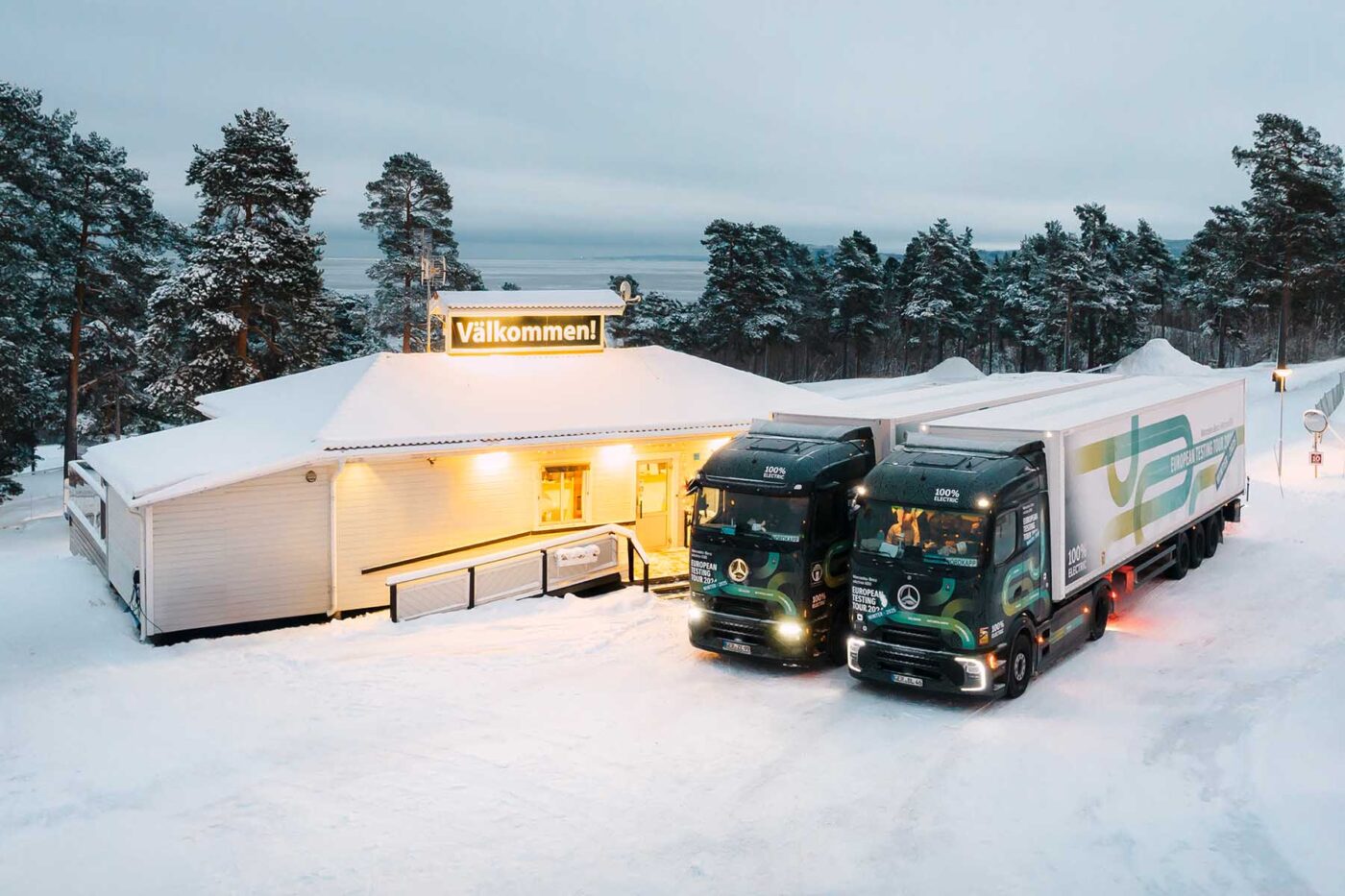
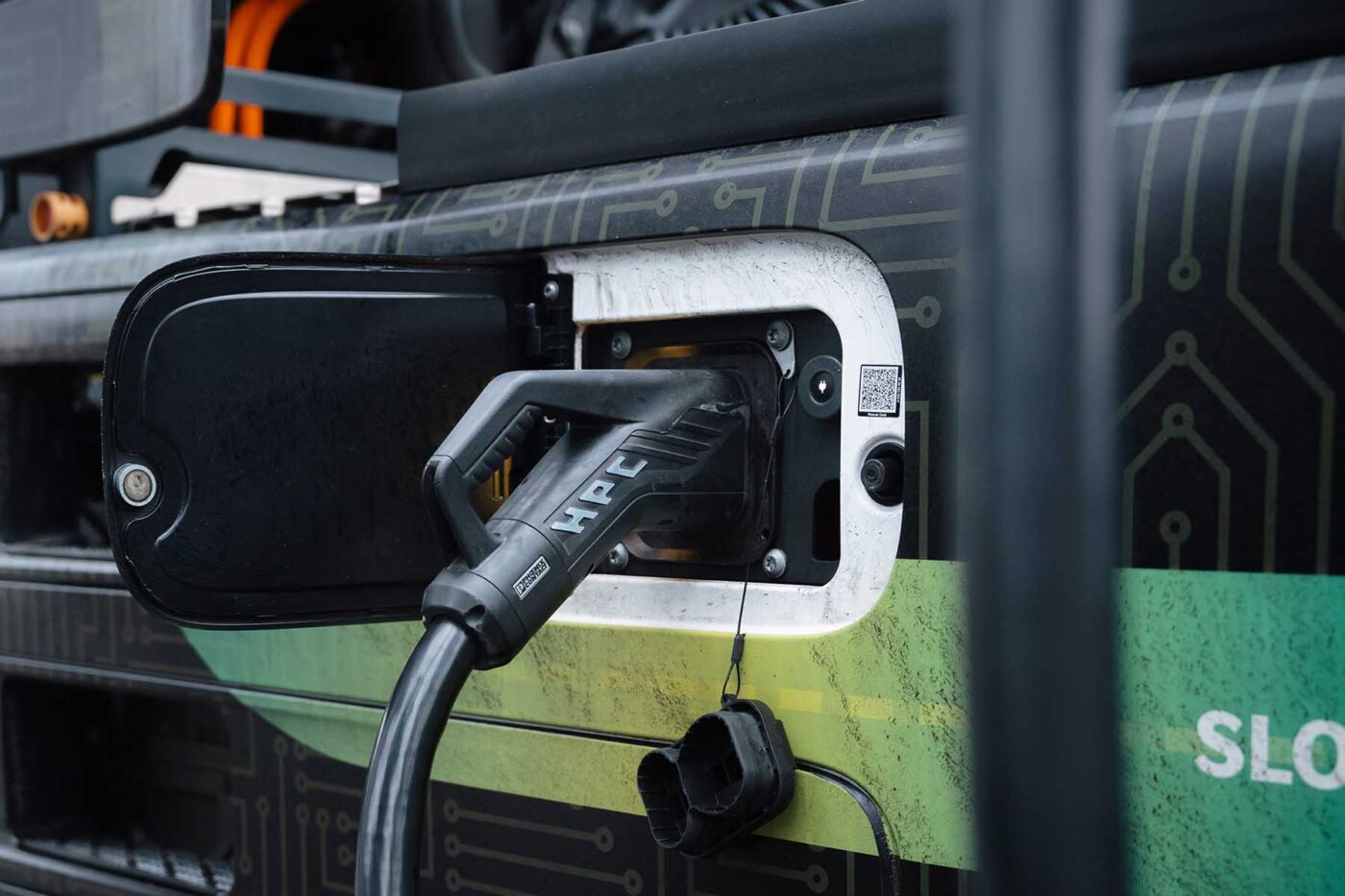
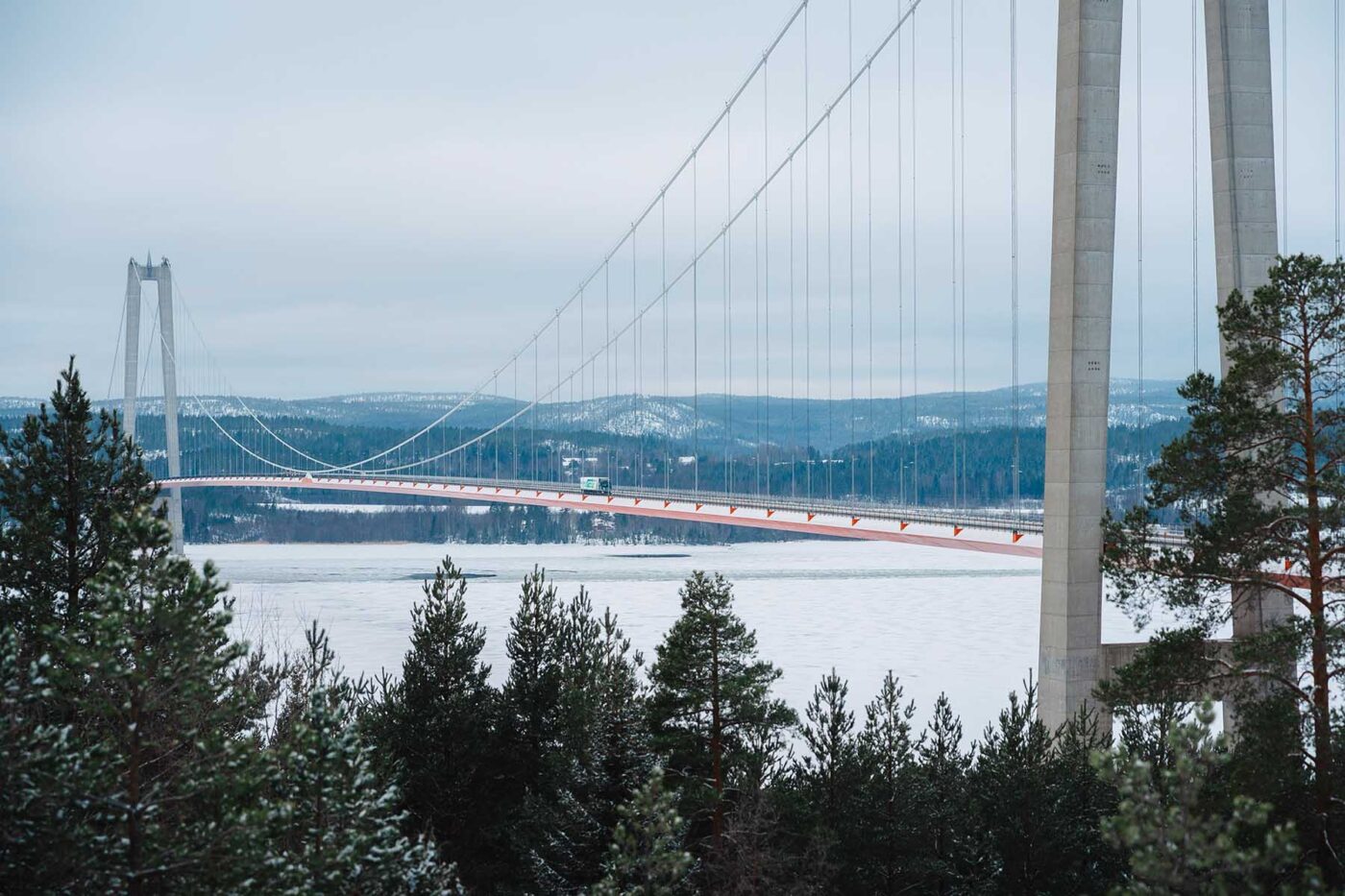
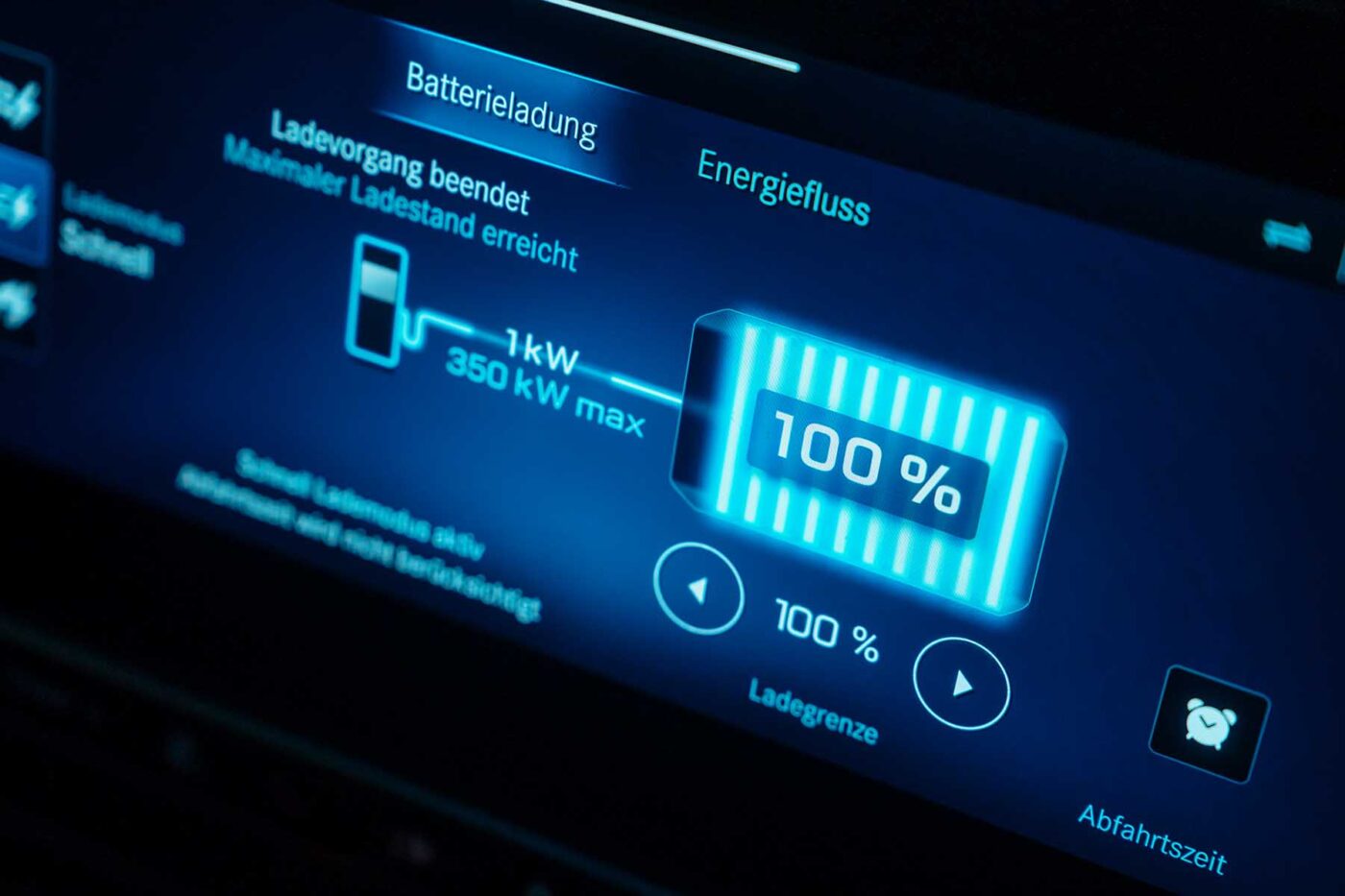
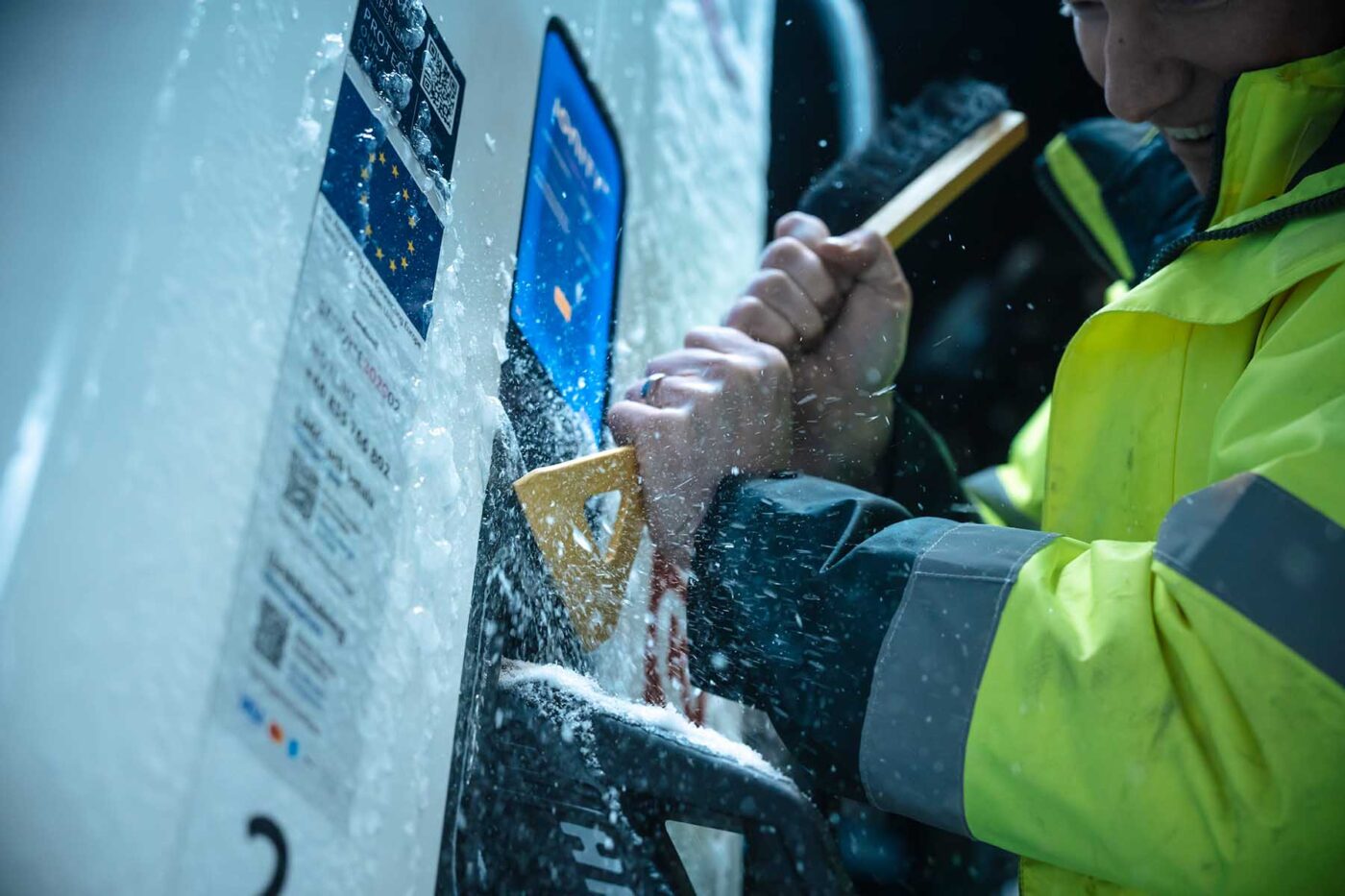
On a “representative section of the route,” completed after a cold start at an average temperature of -2 degrees Celsius and on energy efficiency class B tyres on a snow-free road, the engineers noted an increase in consumption of around 25 per cent. In the summer, the two eActros 600s were equipped with efficiency class A tyres. 15 per cent of the additional consumption can be attributed to the increased rolling and air resistance. Five per cent can be attributed to heating the cab to 21 degrees. “Less than one per cent” was used to heat the battery, and “other auxiliary consumers accounted for well below one per cent of the additional consumption,” says Daimler Truck. The remaining four per cent “was caused by lower recuperation power compared to the summer, which is largely due to increased rolling and air resistance.”
Unsurprisingly, the additional consumption was higher on “particularly demanding routes with predominantly snow-covered and partially icy roads.” Here, the company states an increase in energy consumption of 50 per cent compared to summer driving. However, that is also because of the efficiency class D ‘Scandinavian’ tyres used on these sections. They are designed for these extreme winter conditions and offer “significantly increased motion resistance.” Nevertheless, there was hardly any difference in the additional consumption due to the heating (cab and battery) or the other auxiliary consumers.
Based on the consumption of 106 kWh/100km that we saw on a mountainous section across Norway during the summer tour, this results in a projected (not measured) consumption of 132 to 159 kWh/100km with 25 to 50 per cent additional consumption. Even under the most extreme winter conditions, this leaves a range of around 390 kilometres – still enough for the maximum driving time of four hours. With 25 per cent additional consumption, the range should be around 470 kilometres.
Daimler Truck thus concludes that “drivers do not have to freeze in the eActros 600 or scrimp on heating,” even in the winter. On the winter tour, the four engineers covered almost 3,000 kilometres in the first five days, only charging at public charging stations. They also slept in the vehicles. “During the day, we set the temperature to 21 degrees Celsius and at night to 19 degrees Celsius for sleeping – at outside temperatures between -7 and 4 degrees Celsius,” explains Werner Kempfle, development engineer and co-project manager of the eActros 600, who was also on the tour. Because of that, the trucks’ range dropped only two to five per cent, showing that the so-called “hoteling” part is hardly significant in terms of overall consumption.
This time, Daimler Truck skipped the section through Norway that electrive was able to accompany in 2024. The route initially ran through Germany, Denmark, Sweden and Finland to the Arctic Circle. It then continued via Estonia, Latvia, Lithuania, Poland, the Czech Republic, and Austria back to Stuttgart and Wörth.
As mentioned, the 621 kWh battery was only charged at public charging stations. There was already some experience of this from the summer tour. “Although it is still challenging to find charging options specifically designed for trucks, we found some state-of-the-art charging parks in Scandinavia in particular, where we did not have to unhitch our trailers and where there was sufficient charging capacity and good infrastructure for driving breaks,” says Jochen Gottstein, Manager Testing Energy Consumption & Range at Daimler Truck, who was present for the entire tour. According to Gottstein, it was a relief not to have to unsaddle in the cold winter temperatures. “Ultimately, however, we also have to admit that this was rather the exception, and that charging infrastructure still needs to be expanded in most of the cases we have seen,” he concludes.

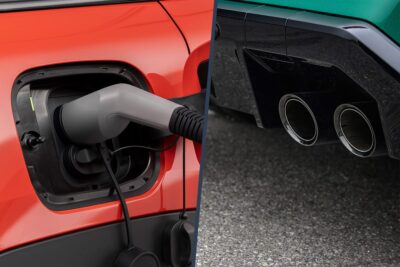
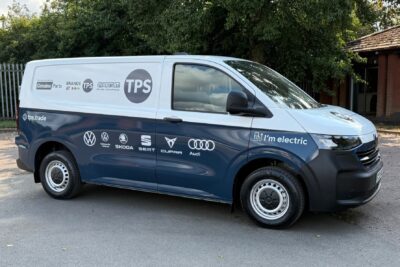

0 Comments